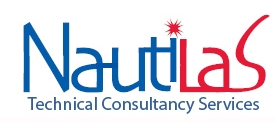Advanced analytical tools, the solution to current shaft alignment challenges
Recent vessel design trends have resulted in propulsion shafting arrangements that are increasingly sensitive and often lead to a high risk of stern tube failures. The introduction of the Energy Efficiency Design Index has resulted to the wider use of more efficient, heavier propellers which rotate at lower speeds. The shorter shafting systems as a result of the effort of maximising the cargo carrying capacity is another noteworthy trend. Finally, the widespread use of single stern tube bearing designs which present an increased sensitivity to eccentric propeller thrust and installation errors has also led to smaller safety factors against bearing failures.
Nautilas provides a solution to these challenges with the use of advanced analytical tools, which investigate the operating conditions of the shafting system in greater depth. An optimised solution is hence provided that increases safety factors and mitigates the risk of failure. There are two main parameters that can affect the propulsion shafting alignment condition during the operation of the vessel.
Dynamic propeller loading applied on the shaft. Propeller forces vary considerably in magnitude and direction depending upon the operating condition and alter the alignment condition accordingly. The most affected part of the system is the bearing adjacent to the propeller i.e. the aft stern tube bearing. If not properly designed, an insufficient load supporting area exists between the shaft and the bearing leading to inadequate oil film thickness and metal-to-metal contact. Although currently beyond the rules of most classification societies, Nautilas considers these loads during the analysis in order to produce an optimised stern tube bearing slope profile. A 3D Finite Element Model (FEA) incorporating fluid-structure interaction is used in order to investigate the shaft - bearing interaction at the stern tube bearing region. An itterative procedure is used where the optimum bearing profile is sought for minimum contact pressures throughout the operating profile of the vessel.
Hull girder deflections. As the hull deforms while afloat, the bearing offsets change producing a different load distribution in the system compared to the Dry-Dock condition. In alignment sensitive vessels such as bulk carriers and tankers, it is very important to account for such an effect in order to reduce the probability of bearing failures and vibration issues. Although not mandatory by Classification Societies, Nautilas offers the capability of applying hull deflection offsets during shaft alignment calculations. An optimisation scheme is used in order to calculate Dry-Dock offsets which wil provide acceptable bearing loads under all operating conditions/drafts.
Our calculations cover the mandatory requirements of all major Classification Societies as well as any relevant optional notations.




